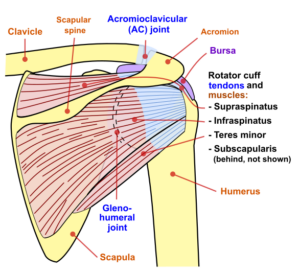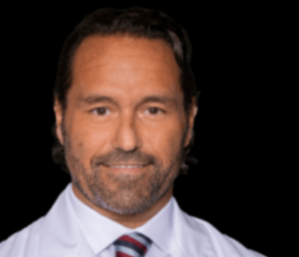
How effective is rotator cuff arthroscopy for restoring full function of the shoulder?
Can the pain be greatly reduced if the function is still impaired?
Pain and dysfunction as a result of tendon inflammation, tendon fraying and tendon tears are commonplace – affecting sedentary and active people of all ages, though are more common in people over 60.
Arthroscopy is done to repair tears in the tendons.
Depending on the patient’s lifestyle, the relief of pain may be all they’re really interested in – such as with an older sedentary person who has no need to lift heavy items over their head.
Thus, if after the procedure, they never acquire good shoulder strength – but at least are free of pain and can perform the typical tasks of daily living – they’ll be a very satisfied patient.
On the other hand, patients who do regular gym workouts involving the upper body will want more than pain relief.
They’ll want a restoration of strength and range of motion.
The motion pattern of a repaired shoulder joint – after arthroscopic surgery – may be much different than the patient’s other shoulder, which can affect activities such as lifting weights.
Tear Size Affects Restoration of Full Shoulder Function
“For the most part, arthroscopic rotator cuff repair will restore full shoulder function, particularly with small- to medium-sized tears,” says Marc F. Matarazzo, MD, a board certified orthopedic surgeon with The Center for Bone & Joint Surgery of the Palm Beaches, FL.
“While we can expect similar functional results from large to massive tears, the re-tear rate can be considerably higher in these patients.
“Large- to massive-size tears can be associated with a higher re-tear rate and less successful outcomes, and some tears can be deemed irreparable at the time of surgery.
“In these instances, other procedures may be indicated including tendon transfers, partial repairs, superior capsular reconstruction procedures, balloon spacer placement and reverse total shoulder replacements.”
Other Reasons Full Function May Not Be Achieved
“Some of the more common reasons that arthroscopic rotator cuff repair may not restore full function include irreparable tears, re-tears or incomplete healing, the development of postoperative stiffness or in the face of postoperative infection,” explains Dr. Matarazzo.
Another crucial element is adherence to the postop physical therapy.
If a patient is non-compliant, for instance, this will lessen the favorability of the outcome.
A patient may also give up too soon, becoming discouraged and abandon finishing the course of physical rehab.
There’s also the possibility of overusing the postop shoulder in day-to-day tasks or while working out.
But all in all, there is generally good patient satisfaction following rotator cuff arthroscopy as far as restored function, and reduction or elimination of the pain – which in some cases could be disabling.
What is the rotator cuff?

The rotator cuff. Jmarchin, CC
It is four muscles and their tendons. The muscles are the subscapularis, supraspinatus, infraspinatus and teres minor.
As the name implies, these muscles — along with their tendons — allow the shoulder to move in all sorts of directions.
Injuries to the tendons can be caused by sport, exercise, work related activity or repetitive overuse in daily living such as frequent pulling upward of a heavy old dog at the collar to help it up a flight of stairs.
 Dr. Matarazzo specializes in sports medicine and related injuries. He performs minimally invasive and complex reconstructions, and joint replacements, of the shoulder and knee. Dr. Matarazzo is certified in the MAKO robotic-assisted knee replacement system and has 20+ years of orthopedic experience. He has a special interest in cartilage restoration and preservation.
Dr. Matarazzo specializes in sports medicine and related injuries. He performs minimally invasive and complex reconstructions, and joint replacements, of the shoulder and knee. Dr. Matarazzo is certified in the MAKO robotic-assisted knee replacement system and has 20+ years of orthopedic experience. He has a special interest in cartilage restoration and preservation.
 Lorra Garrick is a former personal trainer certified by the American Council on Exercise. At Bally Total Fitness she trained clients of all ages for fat loss, muscle building, fitness and improved health.
Lorra Garrick is a former personal trainer certified by the American Council on Exercise. At Bally Total Fitness she trained clients of all ages for fat loss, muscle building, fitness and improved health.
.
Top image: ©Lorra Garrick
Everyday Movement Patterns that Can Hurt the Rotator Cuff, and How to Relieve Pain
.











